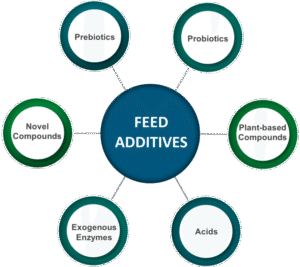The development of aquaculture, particularly for species like freshwater prawns and shrimps, has evolved significantly over the decades. Today, both prawn and shrimp farming are crucial parts of global aquaculture, supporting food production, economic growth, and sustainable resource use. This section covers the history of development, present status, and detailed breeding, incubation, hatching, and rearing processes for freshwater prawns and shrimps.
1. History of Development
Freshwater Prawn (Macrobrachium rosenbergii)
Early Development: Freshwater prawn farming began in Southeast Asia and India, where wild prawns were initially harvested from rivers and ponds. The cultivation of prawns in controlled environments started in the mid-20th century.
Breakthrough in Hatchery Techniques: The development of artificial hatchery techniques for prawns occurred in the 1960s, particularly by researchers in Malaysia and Hawaii. They discovered that prawns required brackish water for their larvae to develop. This led to the first large-scale commercial operations.
Expansion: During the 1970s and 1980s, prawn farming spread to other regions, including Latin America, Africa, and parts of Europe. With improvements in larval rearing and feed technology, the industry began to grow.
Shrimp (Penaeus vannamei)
Early Development: Shrimp farming started on a small scale in the 1930s in Southeast Asia, particularly in Thailand, Indonesia, and the Philippines. These farms relied on wild-caught seed and extensive systems.
Intensive Shrimp Farming: In the 1970s and 1980s, advances in hatchery technology and feed formulations allowed for the intensification of shrimp farming, particularly in Latin America (Ecuador and Mexico) and Asia (China and Vietnam).
Global Expansion: The 1990s saw a boom in shrimp farming due to the development of Specific Pathogen-Free (SPF) strains and the popularity of Penaeus vannamei (whiteleg shrimp), which became the dominant species in global production.
2. Present Status
Freshwater Prawns
Production Regions: Freshwater prawn farming is primarily concentrated in Southeast Asia (Thailand, India, Bangladesh, and Vietnam), as well as parts of South and Central America.
Global Demand: There is strong global demand for freshwater prawns due to their large size and favorable market prices, especially in niche markets in Asia, Europe, and North America.
Challenges: The industry faces challenges such as disease management, competition with marine shrimp species, and production costs.
Shrimp
Leading Producers: The top shrimp-producing countries include China, India, Vietnam, Indonesia, and Ecuador. Shrimp farming is a major export industry for many of these countries.
Market Size: Shrimp farming has become a multi-billion-dollar industry, with Penaeus vannamei accounting for about 70-80% of global farmed shrimp production.
Technological Advances: Improved biosecurity measures, disease-resistant strains, and recirculating aquaculture systems (RAS) have been developed to improve production efficiency and environmental sustainability.
3. Breeding Requirements
Freshwater Prawns
Broodstock Management: Select mature prawns (18–24 months old) that exhibit desirable traits (size, health).
Males and females are kept in separate tanks to control breeding.
Environmental Conditions: Water temperature should be maintained at 28-31°C, and pH levels between 7.0–8.0.
Broodstock is fed with a high-protein diet (40% protein) to encourage healthy spawning.
Breeding Cycle: Females carry fertilized eggs under their abdomen until they hatch.
The eggs transition from dark green to orange or brown before hatching, indicating readiness.
Shrimp
Broodstock Selection: Broodstock are usually Specific Pathogen-Free (SPF) or Specific Pathogen-Resistant (SPR) to reduce disease risks.
Broodstock are kept in tanks with controlled water quality and temperature (26–30°C).
Spawning: Females are induced to spawn either naturally or by hormone treatment.
Each female shrimp can produce between 50,000 to 1 million eggs, depending on size.
4. Incubation and Hatching of Eggs
Freshwater Prawns
Egg Incubation: After spawning, the female carries the fertilized eggs attached to her swimmerets under her abdomen for about 20-22 days.
The female is placed in brackish water (around 12-15 ppt salinity) to facilitate larval hatching.
Hatching:Eggs hatch into free-swimming larvae, which must be transferred to rearing tanks with brackish water.
The larvae pass through several stages (zoea, mysis) over 25-30 days before reaching the post-larval stage (PL).
Shrimp
Egg Incubation: Eggs are incubated in tanks with circulating water. Optimal conditions include a temperature of 28°C and 30-35 ppt salinity.
Eggs hatch within 12-15 hours, depending on species and environmental conditions.
Hatching: Larvae hatch in the nauplii stage and are then transferred to larval rearing tanks. They undergo metamorphosis through stages (zoea, mysis) before reaching the post-larval stage (about 15-20 days).
Thank you for reading. Don't forget to subscribe & share!
5. Rearing of Larvae and Juveniles
Freshwater Prawns
Larval Rearing: Post-hatching, larvae are reared in brackish water tanks (10-15 ppt salinity).
They are fed a diet of live feed such as Artemia nauplii, microalgae, and formulated feed.
Proper aeration and water quality management are critical to avoid disease outbreaks and optimize growth.
Once they reach the post-larval stage (after 25-30 days), they can be acclimated to freshwater and transferred to grow-out ponds.
Juvenile Rearing: Juveniles are stocked in grow-out ponds at densities of 4-6 prawns per square meter.
They are fed with commercial pellets and supplemental feeds. Regular water exchange and aeration ensure good growth rates.
Prawns reach market size (25-40 grams) in about 6-9 months.
Shrimp
Larval Rearing: Larvae are reared in brackish water with a salinity of around 30 ppt.
They are fed live microalgae (e.g., Isochrysis) and Artemia nauplii, with supplemental formulated feed.
Aeration, water circulation, and disease control are essential during this phase.
Juvenile Rearing: Juvenile shrimp (post-larvae) are stocked in grow-out ponds at high densities (10-50 shrimp per square meter, depending on the system).
Feeding involves high-protein commercial pellets, and feeding rates are adjusted according to the growth stage.
Shrimp reach market size (20-30 grams) in 3-6 months, depending on stocking density, water quality, and management practices.









